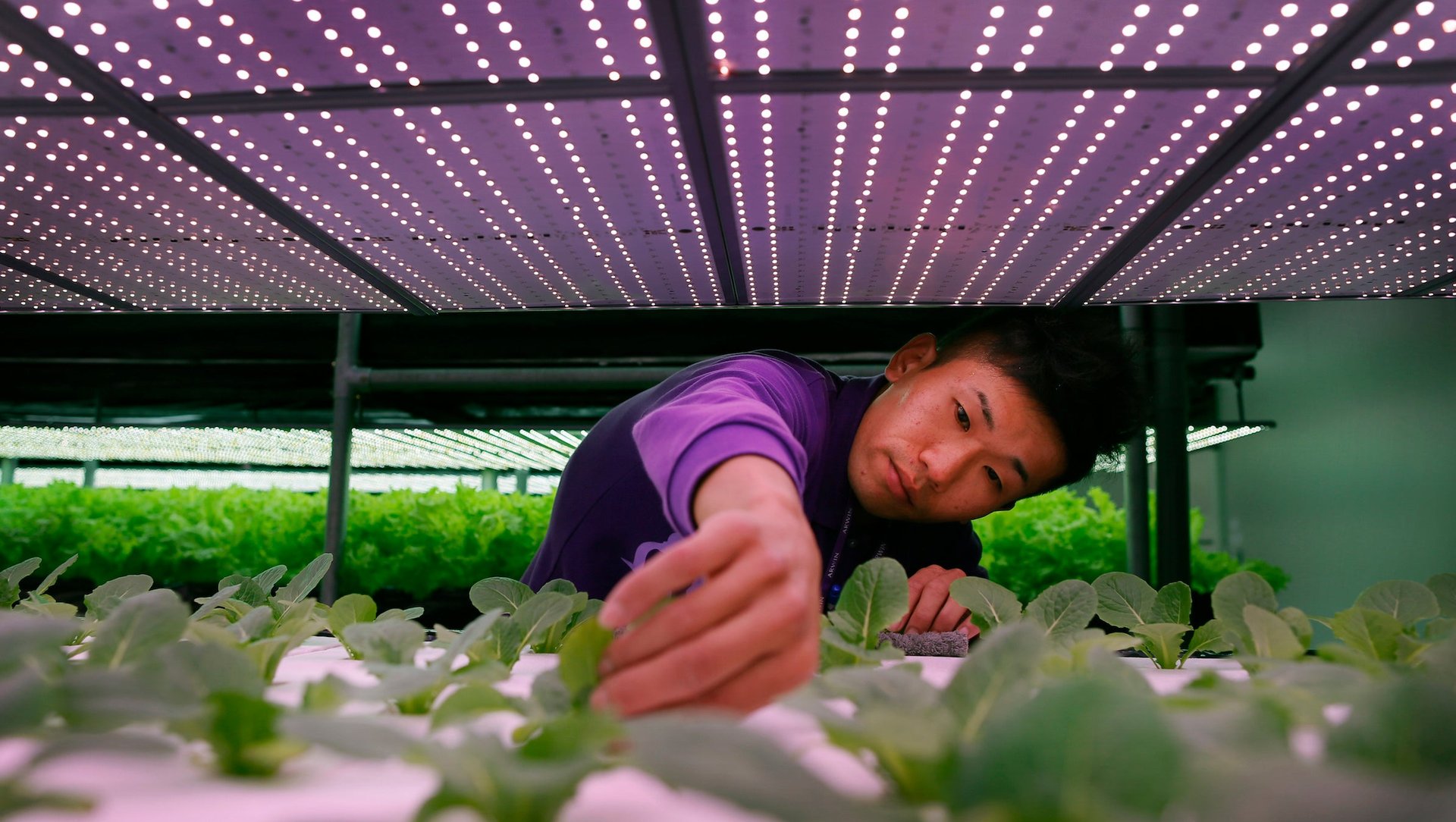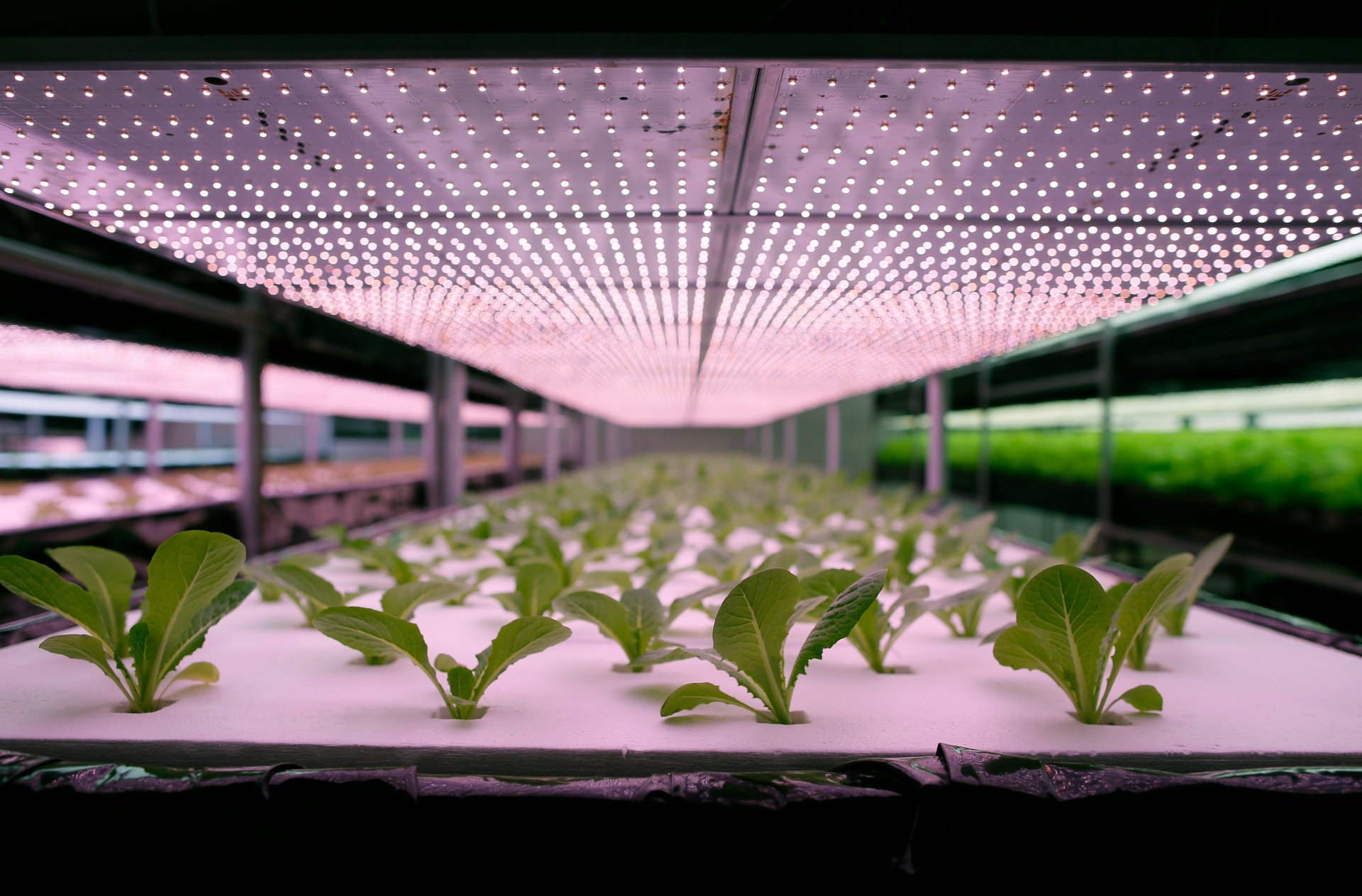Japan is building a giant robotic lettuce factory
Indoor lettuce-growing is in vogue. And it’s being taken over by robots.


Indoor lettuce-growing is in vogue. And it’s being taken over by robots.
In 2016, Japanese vegetable production company Spread plans (pdf) to begin building a lettuce factory in Kyoto that produces 30,000 heads of lettuce per day, or 10 million heads annually, using a growing technique that’s almost entirely automated.
As of last year, the world’s largest vegetable factory by square footage, also located in Japan at an abandoned Sony factory in Miyagi Prefecture, produced roughly one-third of that amount per day, according to National Geographic. And more of the work there was done by hand.
That’s where Spread’s robots come in: Of the six stages involved in growing lettuce—seeding, germination, transporting seedlings to a larger bed, growing the vegetable to full size, and harvesting—Spread plans to automate all but the germination and seeding processes, such that 30,000 heads of lettuce will pop out daily “at the push of a button,” according to the company. (As of last year, the Miyagi vegetable factory was transplanting seedlings and harvesting the plants manually.)
Robots will take lettuce seedlings from stacker cranes and transplant them into beds to grow fully and then be harvested and sent to packaging on a factory line, according to the Wall Street Journal. Temperature, humidity, carbon dioxide levels, water and light, will also be automatically controlled, according to the company.

Thanks to its dense population and scarcity of arable land, Japan is at the forefront of a movement toward high-tech indoor agriculture. Its benefits compared to traditional agriculture include larger harvests per square foot, less water waste, fewer pesticides, and year-round growing.
For instance, Spread’s newest factory (it already supplies produce to 2,000 stores in Japan from other factories) boasts the ability to recycle 98% of all water used, by absorbing moisture in the air emanating from plant leaves. It also plans to reduce costs by using LED lights designed to stay cool, allowing indoor farmers to put the lights much closer to the plants. The energy efficiency of using LEDs on indoor agriculture could cut costs to one-fourth of that required by using high pressure sodium lamps.
